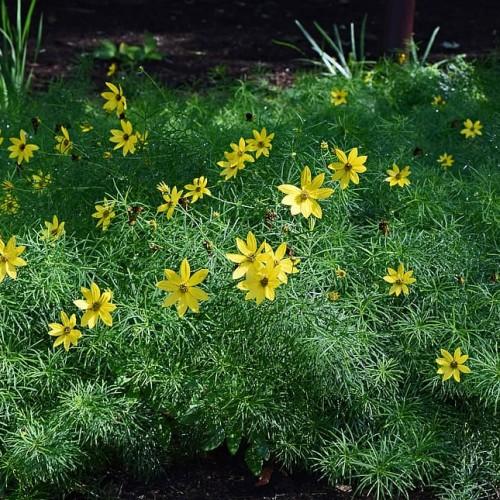
threadleaf coreopsis
Coreopsis verticillata 'Grandiflora'
Cycle:
Herbaceous Perennial
Watering:
Minimum
Hardiness Zone:
3 - 9
Flowers:
Flowers
Sun:
Full sun
Leaf:
Yes
Growth Rate:
High
Maintenance:
Low
Salt Tolerant:
Yes
watering
Threadleaf coreopsis (Coreopsis verticillata 'Grandiflora') should be watered about once a week, or more frequently during hot, dry weather. To ensure the water is penetrating to the plant's root system, slowly pour water at the base of the plant until the soil is saturated (around 1 inch of water). Be sure not to over-water, as this can cause root rot, and avoid wetting the foliage. When it is not raining, mulch around the base of the plant to help with soil moisture retention.
sunlight
Threadleaf coreopsis prefers full sun to light shade and blooms for the majority of the summer months. The plant tolerates drought and responds best to soil that is well-drained but still retains moisture. It grows best in sandy or gravelly, loamy, acidic or basic (alkaline) soils with good drainage. It can grow in partial shade, however, it does best with at least 6 hours per day of direct sunlight. It also prefers a pH between 5.1 and 8.0 but can tolerate higher levels of pH in most soils.
pruning
Threadleaf coreopsis should be pruned after the first flowering in early summer. It should be cut back by 2-3 inches, to make sure the plant remains compact and produces plenty of flowers. If flower production decreases in summer, a light pruning can be done. Deadheading spent flowers may help to extend the bloom time. In late winter, the stems should be trimmed to 8-10 inches to promote a bushier form and encourage more blooms.
